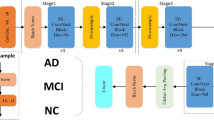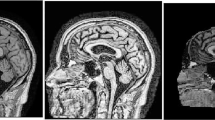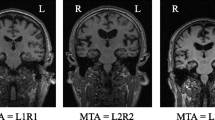Abstract
Alzheimer’s disease (AD) is a latent progressive neurodegenerative disease. Early detection can prevent further damage to patient’s health. We proposed a 3D abnormal perception depth residual network based on the squeeze and excitation module (RSE) and recurrent slice attention module (RSA). In our model, RSE captures the importance of different channels by integrating extrusion and excitation modules into residual blocks, while RSA aims to model 3D MRI images as slice sequences to capture the long-term dependence of different slices in different directions. Our model combine the context information of the abnormal area with local and spatial information. Experimental results show that the accuracy of our method is 87.5%, which is better than the most advanced model in terms of normal cognition (NC), early mild cognitive impairment (EMCI), late mild cognitive impairment (LMCI) and Alzheimer’s disease (AD) on the ADNI dataset. The CAM visualization results also show that our method can successfully highlight the most contributing regions of 3D MRI images.
Access this chapter
Tax calculation will be finalised at checkout
Purchases are for personal use only
Similar content being viewed by others
References
Abrol, A., Bhattarai, M., Fedorov, A., Du, Y., Plis, S., Calhoun, V., Alzheimer’s Disease Neuroimaging Initiative: Deep residual learning for neuroimaging: an application to predict progression to Alzheimer’s disease. J. Neurosci. Methods 339 (2020)
Ashburner, J., Friston, K.J.: Voxel-based morphometry-the methods. Neuroimage 11(6), 805–821 (2000)
Backstrom, K., Nazari, M., Gu, Y.H., Jakola, A.S.: An efficient 3D deep convolutional network for Alzheimer’s disease diagnosis using MR images, pp. 149–153 (2018)
Bahar-Fuchs, A., Clare, L., Woods, B.: Cognitive training and cognitive rehabilitation for persons with mild to moderate dementia of the Alzheimer’s or vascular type: a review. Alzheimer’s Res. Ther. 5(4), 35 (2013)
Cheng, B., Zhong, J., Jiang, X.: Multimodal ensemble classification of Alzheimer’s disease and mild cognitive impairment. J. Integr. Technol. (2013)
Cheng, D., Liu, M.: CNNs based multi-modality classification for ad diagnosis. In: International Congress on Image and Signal Processing, Biomedical Engineering and Informatics, pp. 1–5 (2017)
Cheng, D., Liu, M., Fu, J., Wang, Y.: Classification of MR brain images by combination of multi-CNNs for ad diagnosis. In: Ninth International Conference on Digital Image Processing (ICDIP 2017) (2017)
Dimitriadis, S.I., Liparas, D., Tsolaki, M.N., Alzheimer’s Disease Neuroimaging Initiative: Random forest feature selection, fusion and ensemble strategy: combining multiple morphological MRI measures to discriminate among healthy elderly, MCI, CMCI and Alzheimer’s disease patients: from the Alzheimer’s disease neuroimaging initiative (ADNI) database. J. Neurosci. Methods 14–23 (2017)
Li, F., Liu, M., Alzheimer’s Disease Neuroimaging Initiative: Alzheimer’s disease diagnosis based on multiple cluster dense convolutional networks. Computerized Medical Imaging and Graphics: The Official Journal of the Computerized Medical Imaging Society (2018)
Fan, L., Cheng, D., Liu, M.: Alzheimer’s disease classification based on combination of multi-model convolutional networks, pp. 1–5 (2017)
Fan, Z., et al.: U-Net based analysis of MRI for Alzheimer’s disease diagnosis. Neural Comput. Appl. 1–13 (2021)
Faturrahman, M., Wasito, I., Hanifah, N., Mufidah, R.: Structural MRI classification for Alzheimer’s disease detection using deep belief network. In: 2017 11th International Conference on Information & Communication Technology and System (ICTS) (2018)
Forouzannezhad, P., Abbaspour, A., Li, C., Cabrerizo, M., Adjouadi, M.: A deep neural network approach for early diagnosis of mild cognitive impairment using multiple features. In: IEEE International Conference on Machine Learning and Applications, pp. 1341–1346 (2018)
Ghosal, P., Nandanwar, L., Kanchan, S., Bhadra, A., Nandi, D.: Brain tumor classification using ResNet-101 based squeeze and excitation deep neural network. In: 2019 Second International Conference on Advanced Computational and Communication Paradigms (ICACCP) (2019)
Guo, X., Yuan, Y.: Triple ANet: adaptive abnormal-aware attention network for WCE image classification. In: Shen, D., et al. (eds.) MICCAI 2019. LNCS, vol. 11764, pp. 293–301. Springer, Cham (2019). https://doi.org/10.1007/978-3-030-32239-7_33
He, K., Zhang, X., Ren, S., Sun, J.: Deep residual learning for image recognition. In: 2016 IEEE Conference on Computer Vision and Pattern Recognition (CVPR) (2016). https://doi.org/10.1109/CVPR.2016.90
Jie, H., Li, S., Gang, S., Albanie, S.: Squeeze-and-excitation networks. IEEE Trans. Pattern Anal. Mach. Intell. PP(99) (2017)
Kim, J., Lee, B.: Automated discrimination of dementia spectrum disorders using extreme learning machine and structural T1 MRI features. In: International Conference of the IEEE Engineering in Medicine and Biology Society, pp. 1990–1993 (2017)
Korolev, S., Safiullin, A., Belyaev, M., Dodonova, Y.: Residual and plain convolutional neural networks for 3D brain MRI classification. In: IEEE International Symposium on Biomedical Imaging 2017 (2017)
Li, Y., Fan, Y.: DeepSEED: 3D squeeze-and-excitation encoder-decoder convolutional neural networks for pulmonary nodule detection. In: 2020 IEEE 17th International Symposium on Biomedical Imaging (ISBI) (2019)
Liu, M., Zhang, J., Adeli, E., Shen, D.: Joint classification and regression via deep multi-task multi-channel learning for Alzheimer’s disease diagnosis. IEEE Trans. Biomed. Eng. 66(5), 1195–1206 (2019)
Liu, M., Zhang, D., Shen, D.: Hierarchical fusion of features and classifier decisions for Alzheimer’s disease diagnosis. Hum. Brain Mapp. 35(4), 1305–1319 (2014)
Liu, S., Liu, S., Cai, W., Pujol, S., Feng, D.: Early diagnosis of Alzheimer’s disease with deep learning. In: IEEE International Symposium on Biomedical Imaging (2014)
Lu, D., Popuri, K., Ding, G.W., Balachandar, R., Beg, M.F., Initiative, A.D.N.: Multimodal and multiscale deep neural networks for the early diagnosis of Alzheimer’s disease using structural MR and FDG-PET images. Sci. Rep. 8(1), 5697 (2018)
Maqsood, M., et al.: Transfer learning assisted classification and detection of Alzheimer’s disease stages using 3D MRI scans. Sensors (Basel, Switzerland) 19(11) (2019)
Nawaz, A., Anwar, S.M., Liaqat, R., Iqbal, J., Majid, M.: Deep convolutional neural network based classification of Alzheimer’s disease using MRI data (2021)
Payan, A., Montana, G.: Predicting Alzheimer’s disease: a neuroimaging study with 3D convolutional neural networks. Comput. Sci. (2015)
Ruiz, J., Mahmud, M., Modasshir, Md., Shamim Kaiser, M., Alzheimer’s Disease Neuroimaging Initiative: 3D DenseNet ensemble in 4-way classification of Alzheimer’s disease. In: Mahmud, M., Vassanelli, S., Kaiser, M.S., Zhong, N. (eds.) BI 2020. LNCS (LNAI), vol. 12241, pp. 85–96. Springer, Cham (2020). https://doi.org/10.1007/978-3-030-59277-6_8
Liu, S., et al.: Multimodal neuroimaging feature learning for multiclass diagnosis of Alzheimer’s disease (2015)
Suk, H.I., Lee, S.W., Shen, D.: Hierarchical feature representation and multimodal fusion with deep learning for AD/MCI diagnosis. Neuroimage 101, 569–582 (2014)
Telagarapu, P., Mohanty, B., Anandh, K.R.: Analysis of Alzheimer condition in T1-weighted MR images using texture features and K-NN classifier, pp. 331–334 (2018)
Vu, T.D., Yang, H.J., Nguyen, V.Q., Oh, A.R., Kim, M.S.: Multimodal learning using convolution neural network and sparse autoencoder. In: IEEE International Conference on Big Data and Smart Computing, pp. 309–312 (2017)
Wang, H., et al.: Ensemble of 3D densely connected convolutional network for diagnosis of mild cognitive impairment and Alzheimer’s disease. Neurocomputing 333, 145–156 (2019)
Woo, S., Park, J., Lee, J.-Y., Kweon, I.S.: CBAM: convolutional block attention module. In: Ferrari, V., Hebert, M., Sminchisescu, C., Weiss, Y. (eds.) ECCV 2018. LNCS, vol. 11211, pp. 3–19. Springer, Cham (2018). https://doi.org/10.1007/978-3-030-01234-2_1
Wu, G., Kim, M., Sanroma, G., Wang, Q., Munsell, B.C., Shen, D.: Hierarchical multi-atlas label fusion with multi-scale feature representation and label-specific patch partition. Neuroimage 106, 34–46 (2015)
Xin, Y., Qiang, W., Hong, D., Zou, J.: Spatial regularization for neural network and application in Alzheimer’s disease classification. In: 2016 Future Technologies Conference (FTC) (2017)
Zhang, H., et al.: RsaNet: recurrent slice-wise attention network for multiple sclerosis lesion segmentation (2020)
Zhou, B., Khosla, A., Lapedriza, A., Oliva, A., Torralba, A.: Learning deep features for discriminative localization. In: CVPR (2016)
Author information
Authors and Affiliations
Corresponding author
Editor information
Editors and Affiliations
Rights and permissions
Copyright information
© 2022 The Author(s), under exclusive license to Springer Nature Switzerland AG
About this paper
Cite this paper
Huo, X., Own, CM., Zhou, Y., Wu, N., Sun, J. (2022). Multistage Diagnosis of Alzheimer’s Disease Based on Slice Attention Network. In: Pimenidis, E., Angelov, P., Jayne, C., Papaleonidas, A., Aydin, M. (eds) Artificial Neural Networks and Machine Learning – ICANN 2022. ICANN 2022. Lecture Notes in Computer Science, vol 13529. Springer, Cham. https://doi.org/10.1007/978-3-031-15919-0_22
Download citation
DOI: https://doi.org/10.1007/978-3-031-15919-0_22
Published:
Publisher Name: Springer, Cham
Print ISBN: 978-3-031-15918-3
Online ISBN: 978-3-031-15919-0
eBook Packages: Computer ScienceComputer Science (R0)




